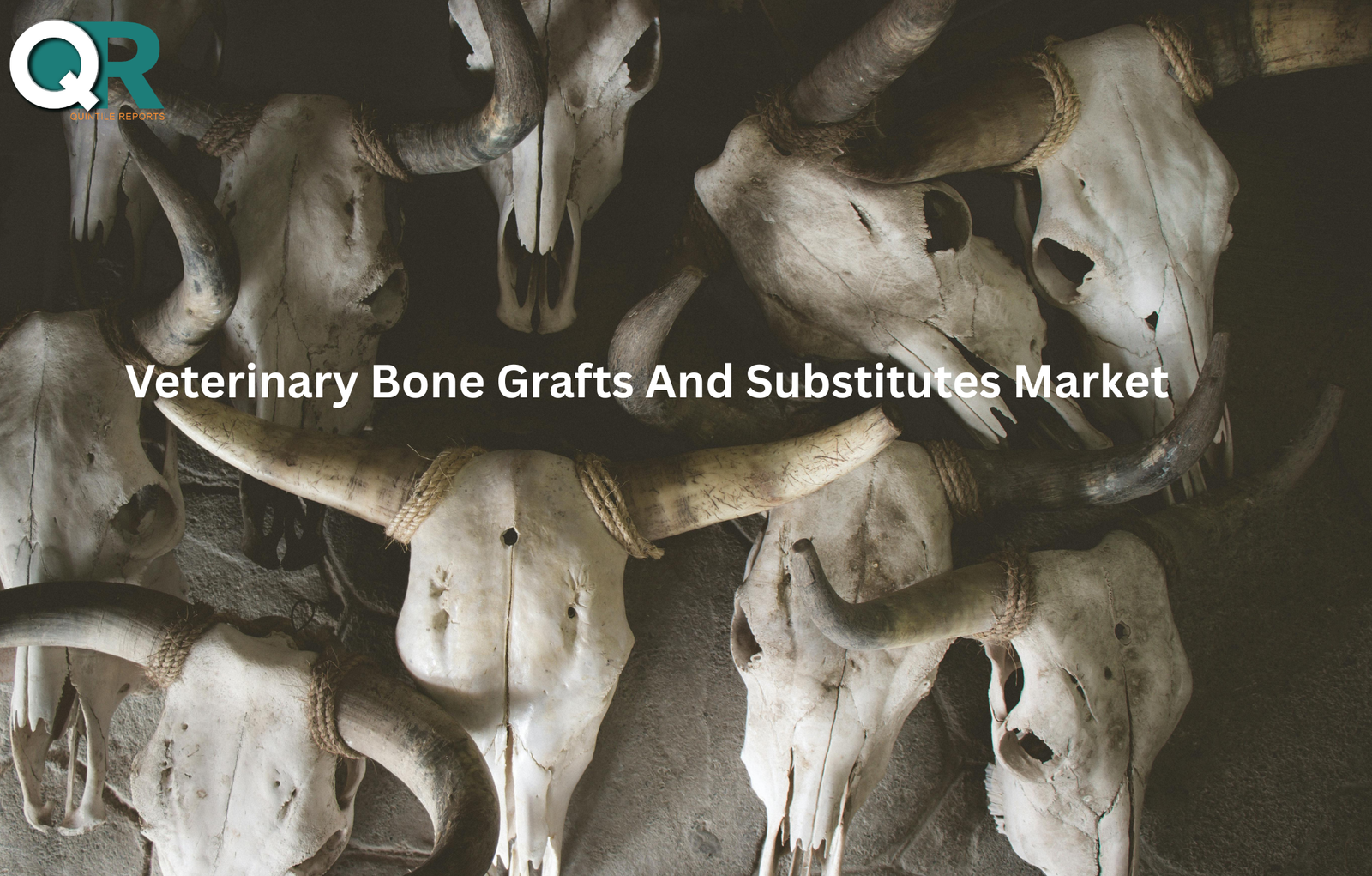The veterinary bone grafts and substitutes market is experiencing consistent growth, fueled by rising global pet ownership, advances in regenerative surgical techniques, and increasing preference for minimally invasive treatment options in veterinary care.
📊 Market Size and Growth Forecasts
In 2024, the global veterinary bone grafts and substitutes market is valued at approximately USD 253.8 million. By 2030, it is expected to grow to USD 371–394 million, reflecting a compound annual growth rate (CAGR) of 6.5% from 2025 onward. Long-term forecasts estimate the market could reach USD 448 million by 2034, maintaining a similar CAGR of 6.4%.
This trajectory is supported by the growing demand for advanced veterinary treatments and increasing awareness among pet owners about orthopedic and dental care options for their animals.
🦴 Leading Product Segments in the Veterinary Bone Grafts and Substitutes Market
By Product Type
- Autografts remain the market leader, accounting for over 41% of total revenue in 2024. They are highly favored due to superior biocompatibility and a low risk of immune rejection.
- However, synthetic bone graft substitutes are gaining rapid popularity. These options offer scalability, easy storage, and reduced risk of disease transmission. The synthetic category is projected to experience the fastest growth through 2030.
- Other types like allografts and xenografts are also expanding steadily, offering alternatives in cases where autografts are not viable.
By Form
- Injectables—such as bone pastes and gels—are seeing increasing adoption. Their minimally invasive nature, shorter surgery times, and faster healing make them particularly attractive.
- Pellets and granules are also growing in demand, especially for larger defect areas or load-bearing bone repairs. Among these, pellet-form grafts are projected to grow fastest through 2030.
🐾 Application Segments Driving Demand
- Orthopedics is the dominant application area, accounting for over 40% of procedures using grafts. Common cases include fractures, joint repairs, and osteotomies in dogs, cats, and horses.
- Dental applications represent the fastest-growing segment, especially for periodontal disease treatments and maxillofacial repairs. Growing awareness of dental health in pets and rising use of biodegradable materials in oral surgeries are key drivers here.
🧪 Material Trends in the Veterinary Bone Grafts and Substitutes Market
- Tricalcium phosphate (TCP) leads the material segment due to its excellent osteoconductivity and compatibility with living tissues.
- Bioglass is gaining significant attention and is forecast to experience the fastest material growth rate. Its regenerative capabilities and ability to be customized for specific defects make it a game-changer in complex cases.
- Materials incorporating collagen, hydroxyapatite, and composite blends are also being explored for enhanced bone healing and structural stability.
🏥 End-User Insights
Veterinary hospitals and clinics dominate the end-user landscape, capturing over 90% of market share in 2024. These institutions are rapidly integrating advanced bone graft technologies into their offerings to meet growing expectations from pet owners seeking premium, effective treatment options.
🌍 Regional Outlook
- North America remains the largest market in 2024 due to high pet ownership rates, robust veterinary infrastructure, and strong spending power among pet parents.
- The Asia Pacific region, particularly China and India, is expected to be the fastest-growing market post-2025. Factors such as rising disposable incomes, urbanization, and growing awareness of pet healthcare are propelling demand.
🔬 Key Market Drivers and Innovations
- Global pet population growth: With an estimated 1.5 billion pets by 2030, the need for orthopedic and dental care is surging.
- R&D in regenerative technologies: New materials like injectables, bioglass, and stem-cell-loaded grafts are improving surgical outcomes and shortening recovery times.
- Product launches: 2024 saw several new entries, including Biocera Vet Equine and other biodegradable grafts targeting dental and large animal care.
⚠️ Challenges and Strategic Opportunities
Challenges
- Regulatory complexities and high development costs can delay innovation.
- Price sensitivity remains an issue in smaller practices and emerging regions.
Opportunities
- Joint ventures between veterinary networks and biotech firms could accelerate technology adoption.
- Expansion of affordable yet effective graft solutions tailored to price-conscious markets.
- Development of customizable solutions using stem cells and bioglass to meet patient-specific needs.
🔚 Conclusion
The veterinary bone grafts and substitutes market is on a robust growth path, poised to exceed USD 370 million by 2030 and potentially hit half a billion USD by 2034. With momentum driven by injectable formats, dental applications, and innovative biomaterials, this market offers lucrative opportunities for investors, manufacturers, and veterinary providers alike.
To capitalize on this growth, stakeholders should:
- Diversify products—expand injectable and synthetic graft lines.
- Invest in R&D—explore bioglass, stem-cell integration, and personalized therapies.
- Educate the market—highlight benefits such as lower rejection rates, improved healing, and surgical convenience.
- Expand globally—target emerging markets with localized pricing models and strategic partnerships.
For more updates:
Moisture Curing Adhesive Market to Hit $12.6B by 2034: Quintile Reports
